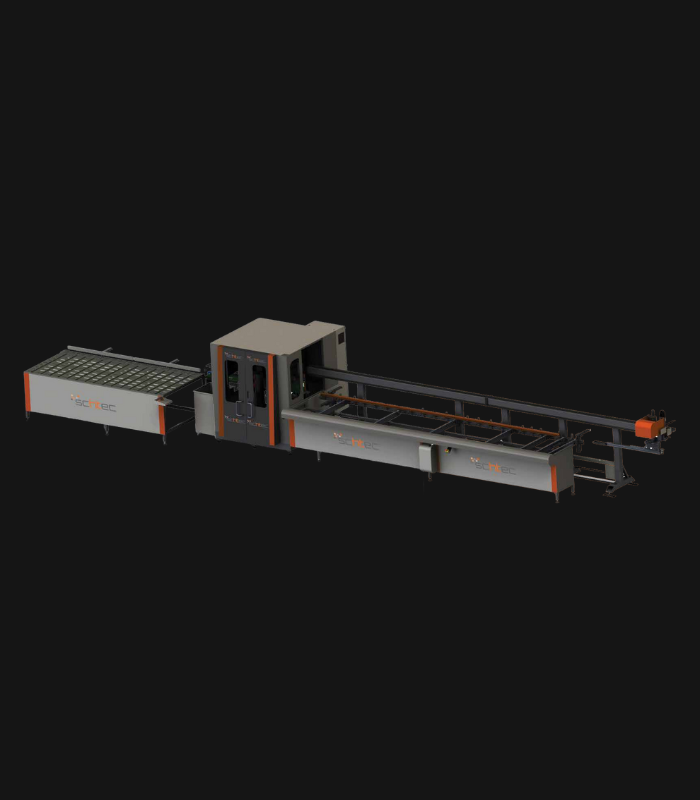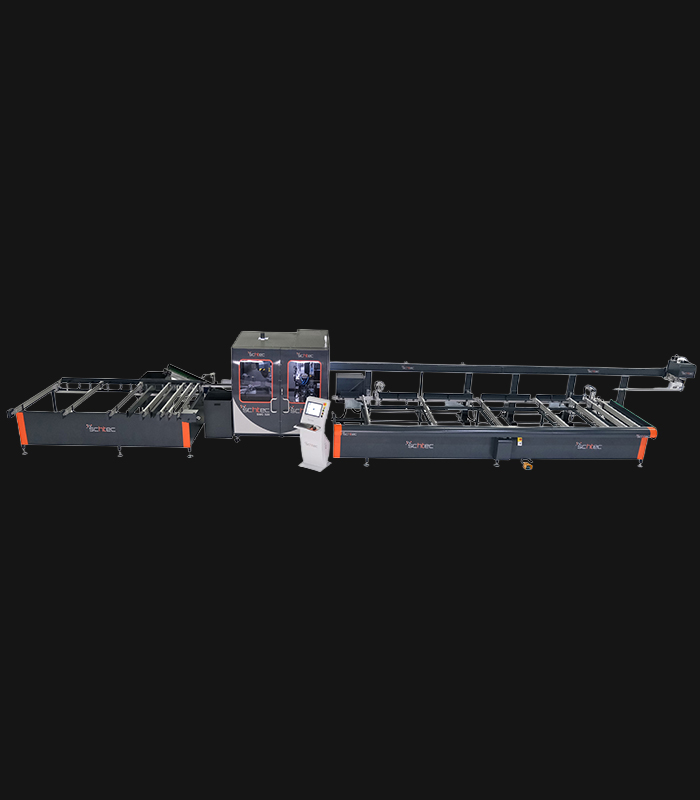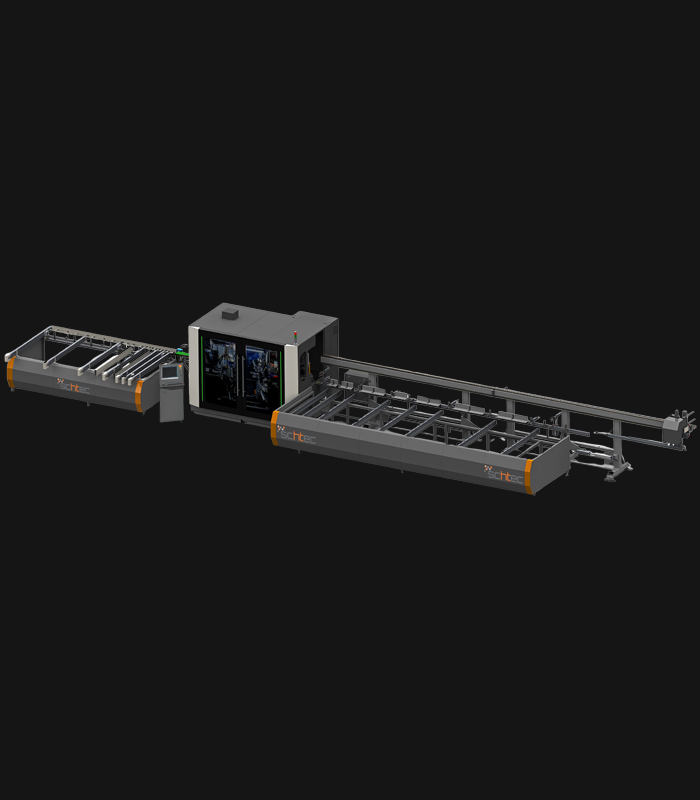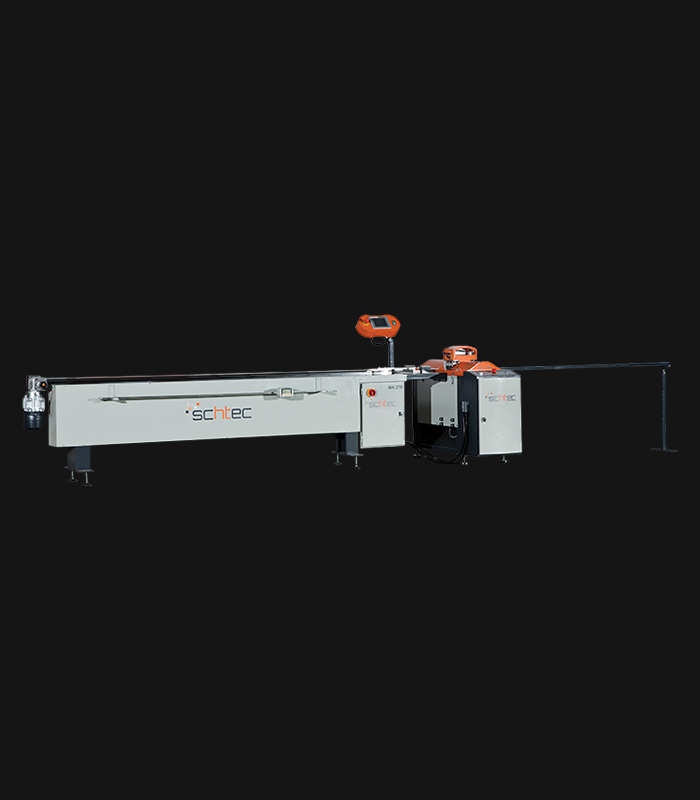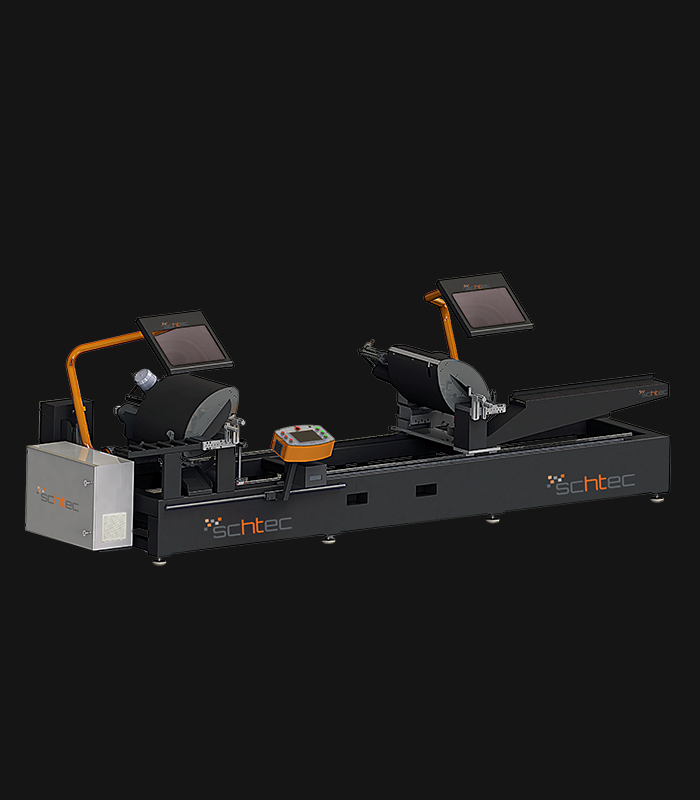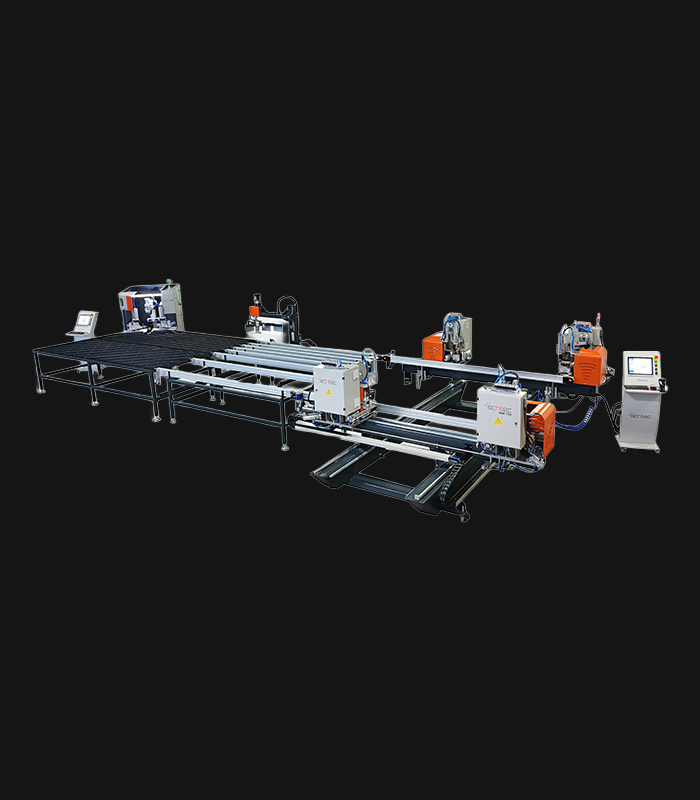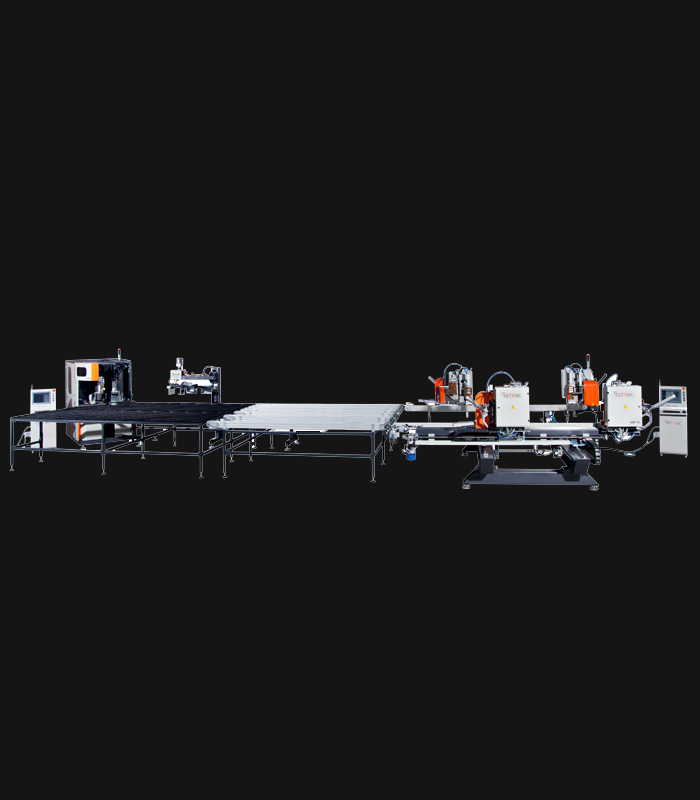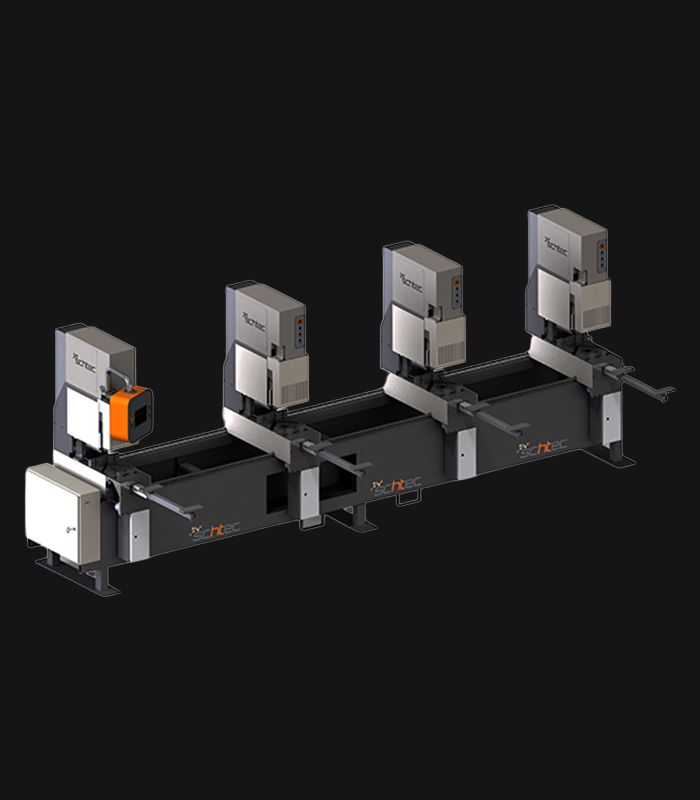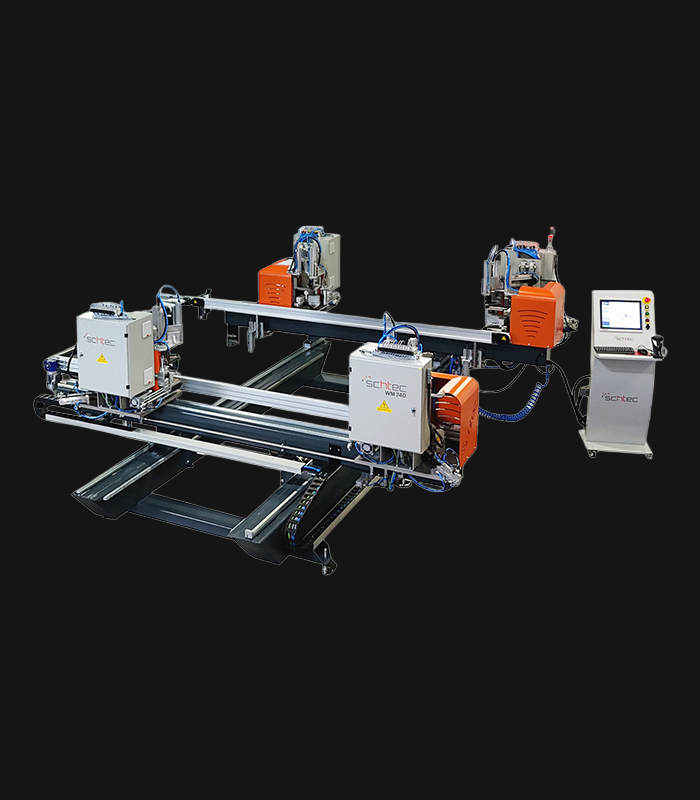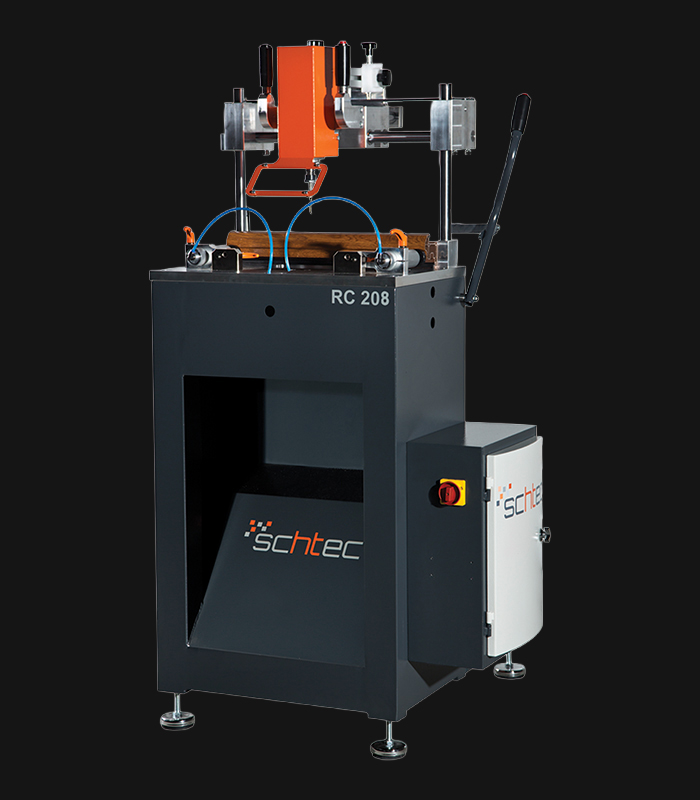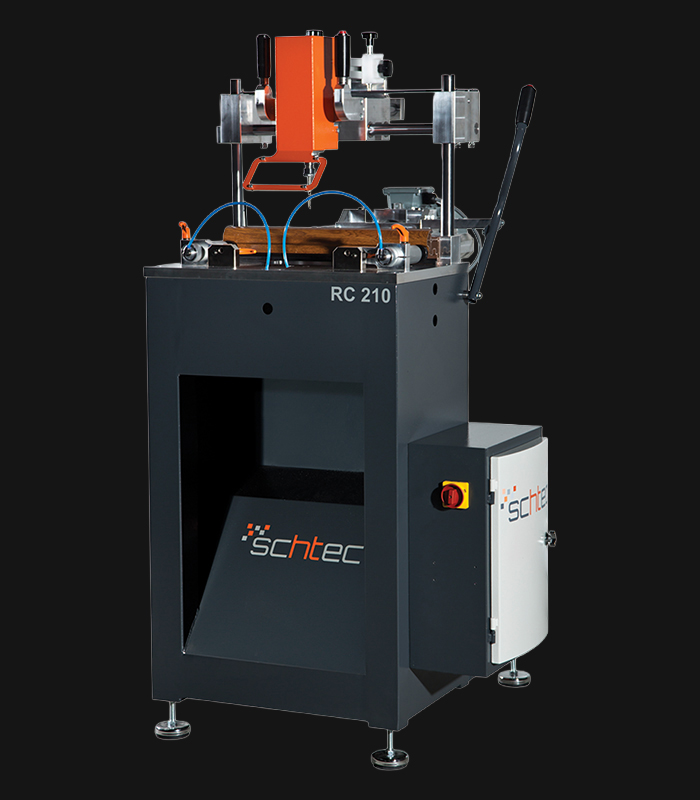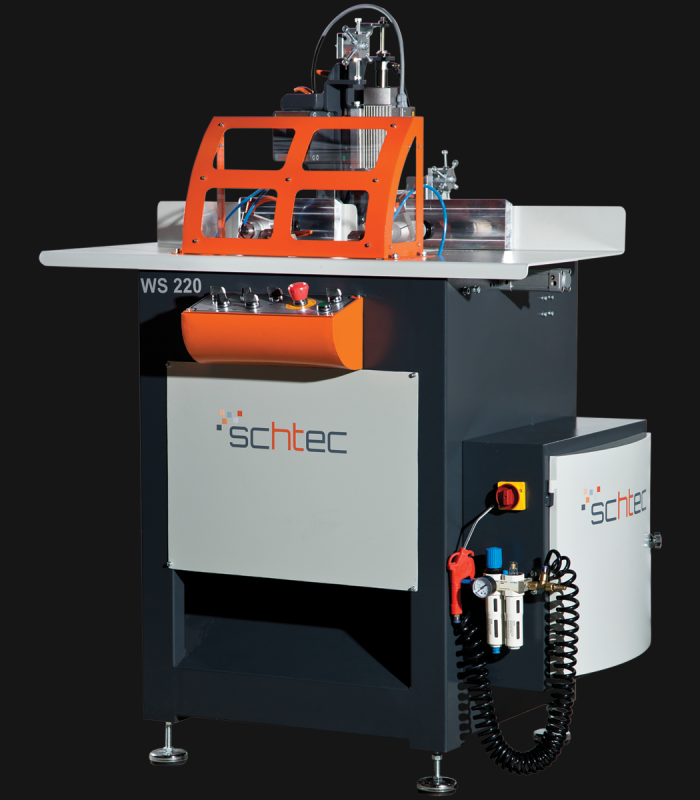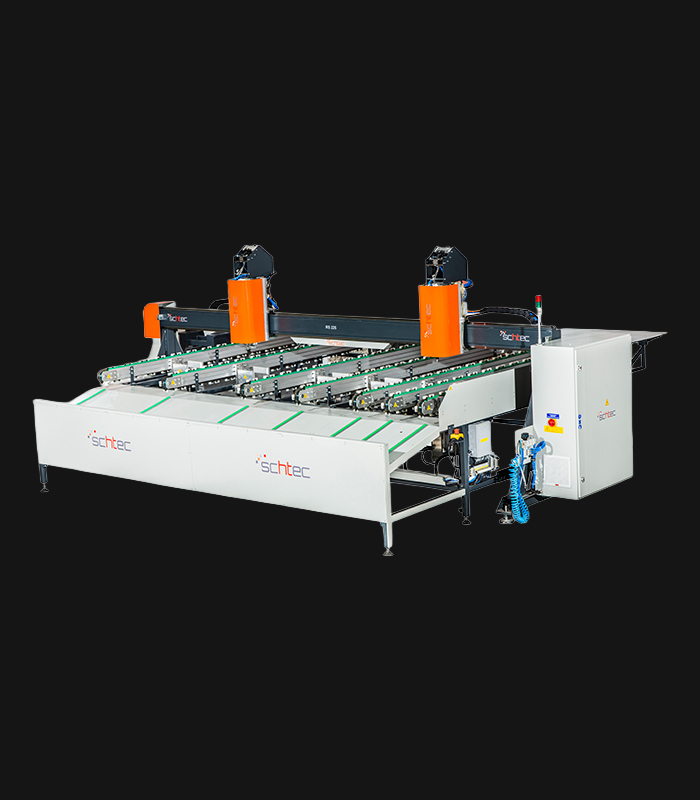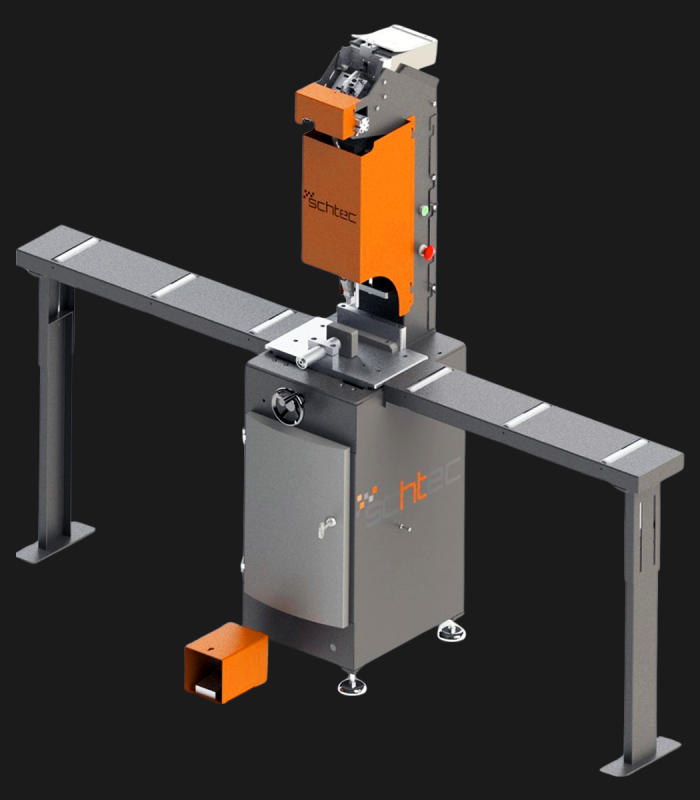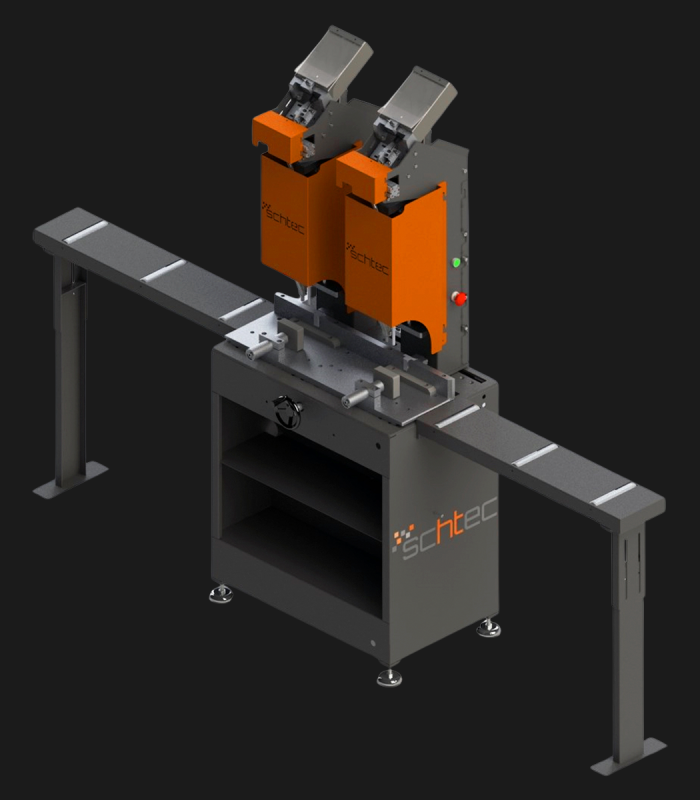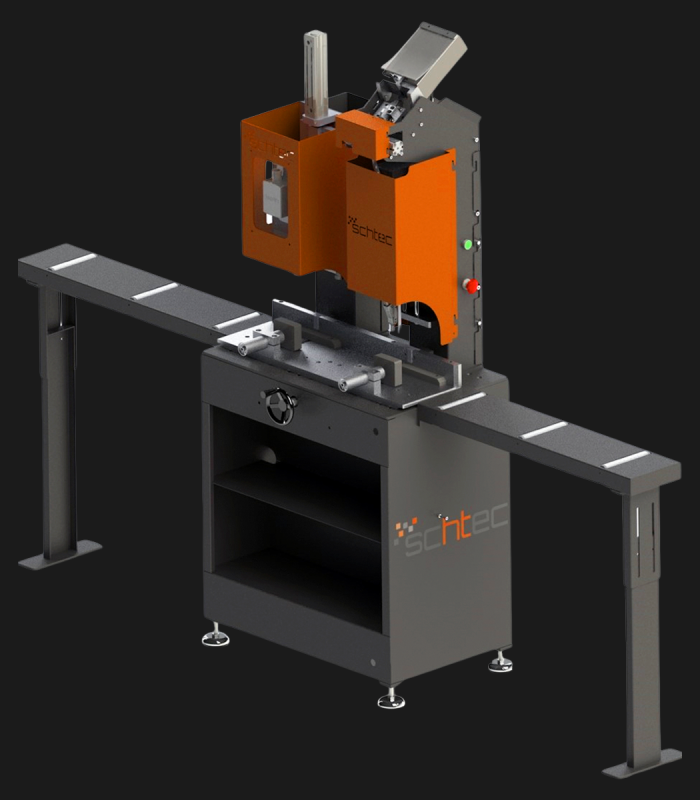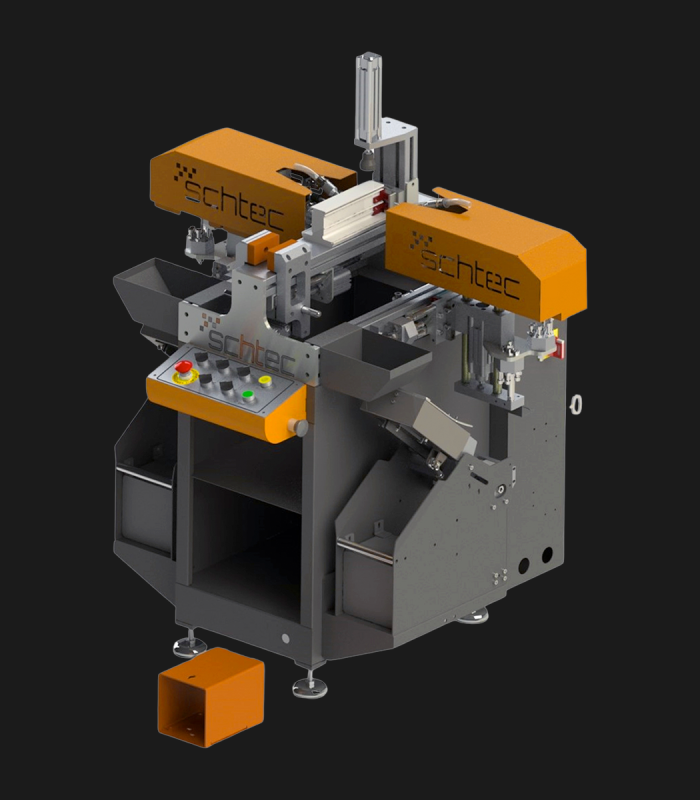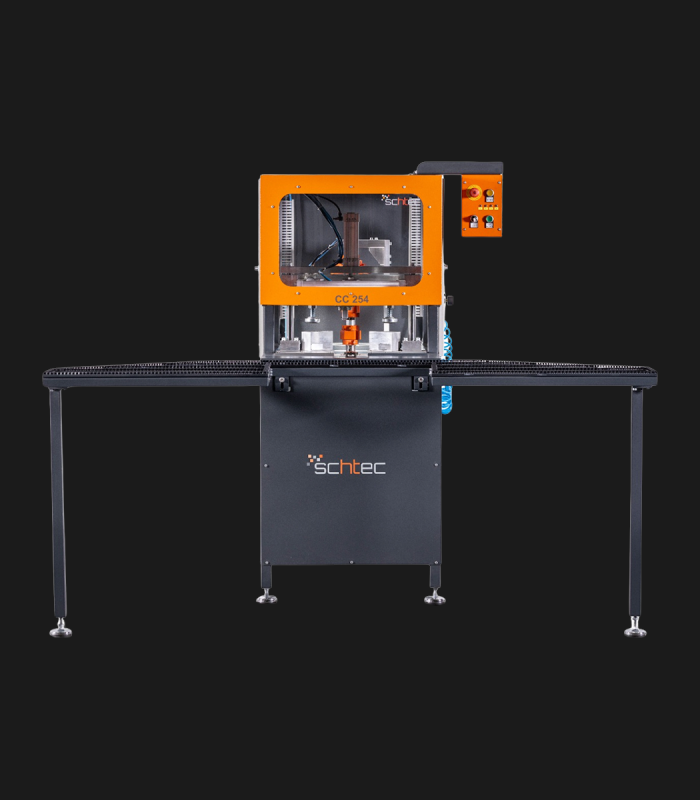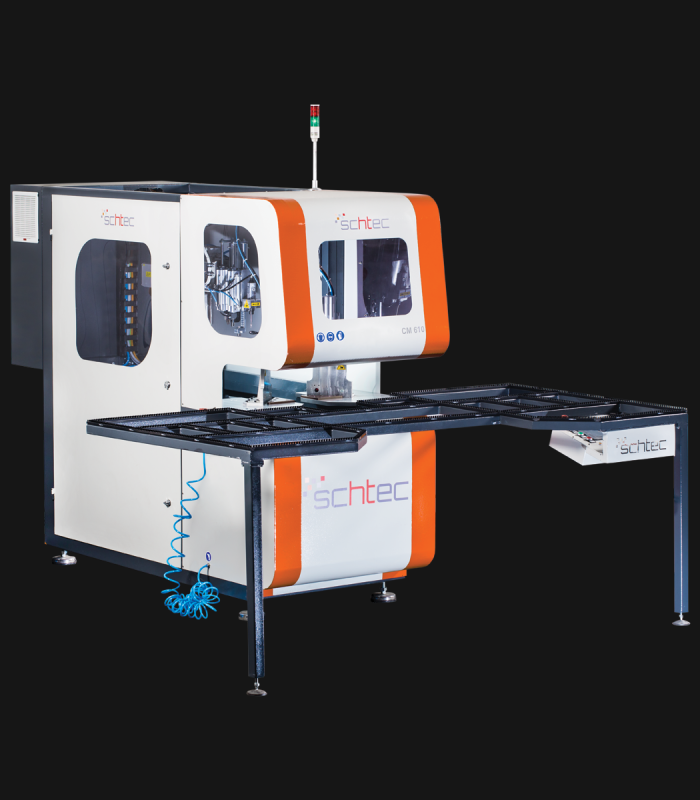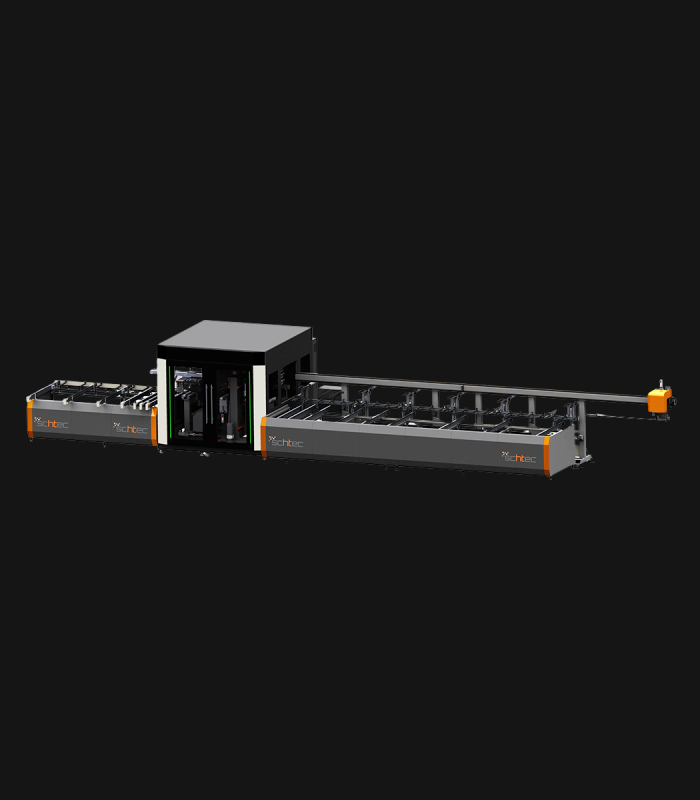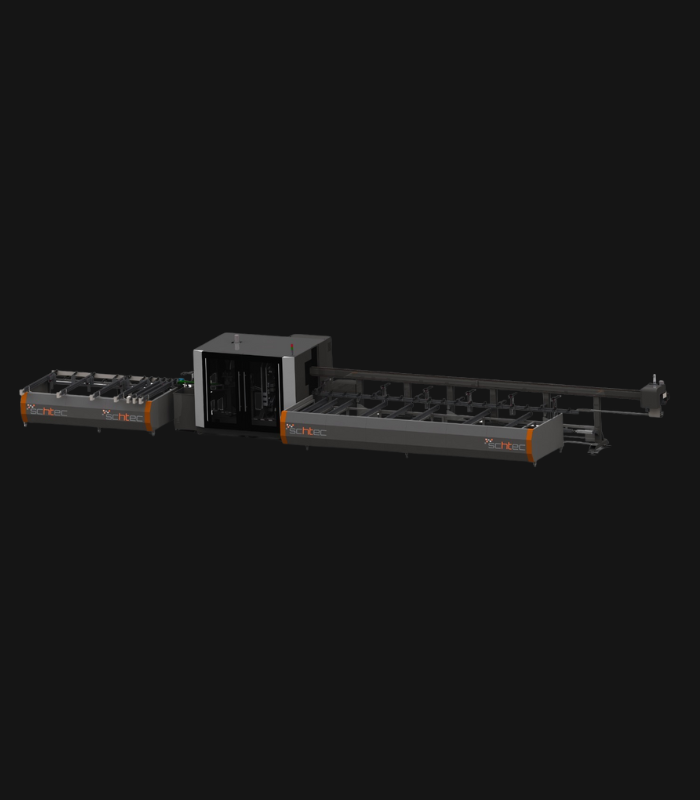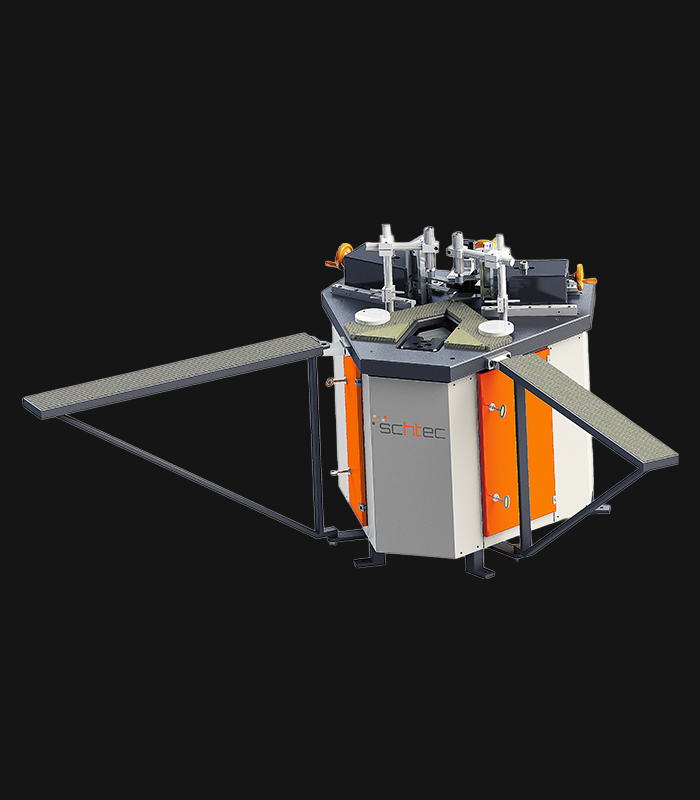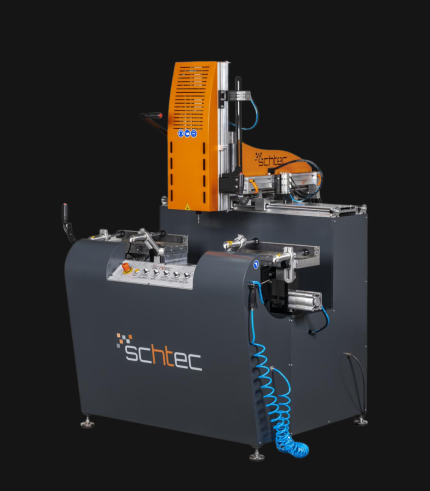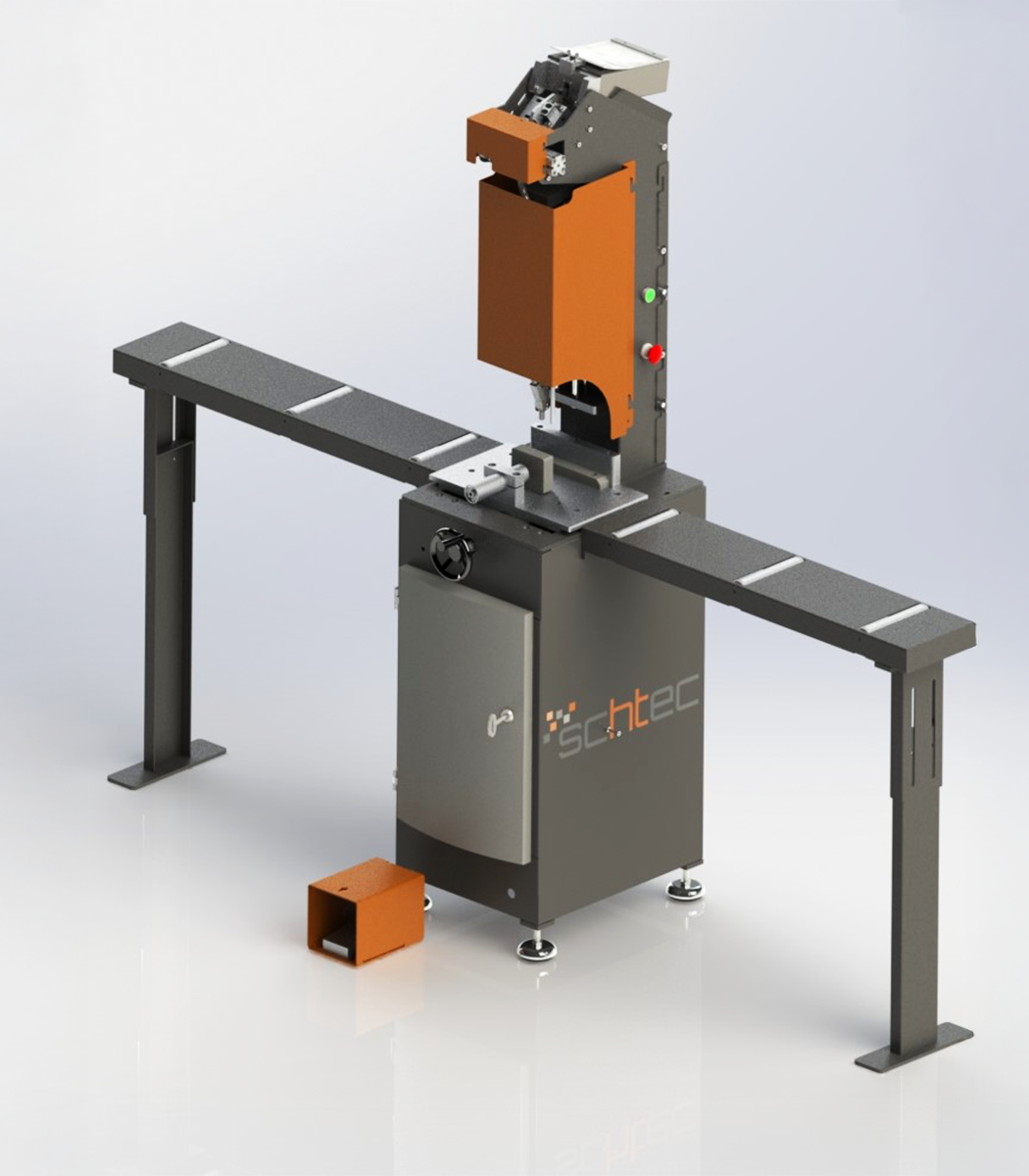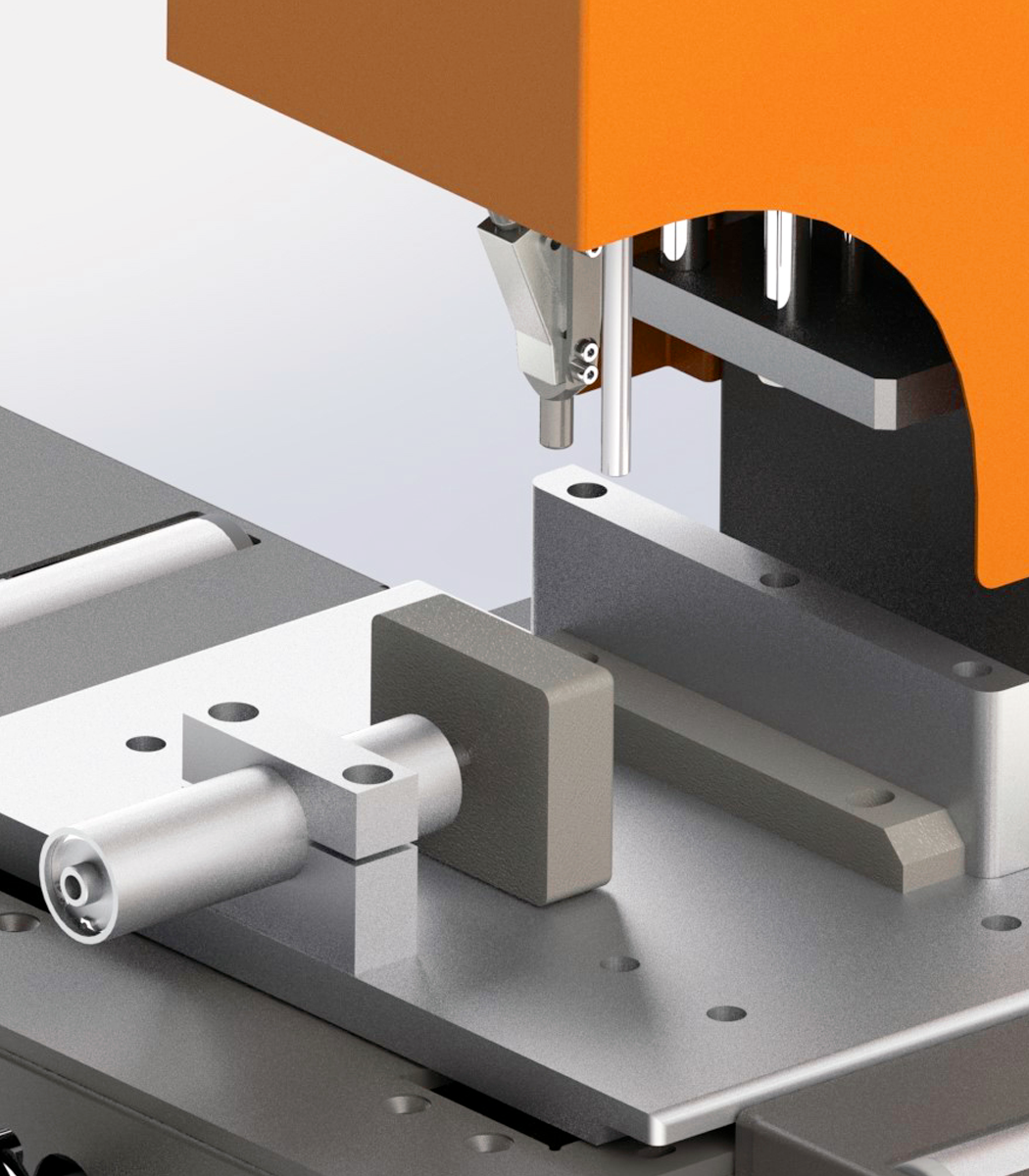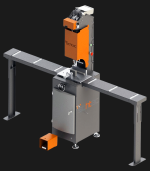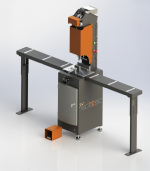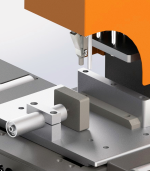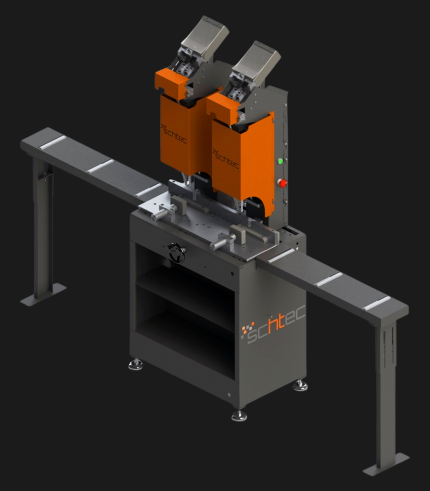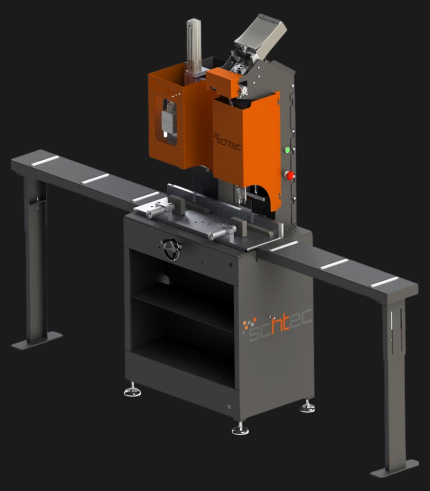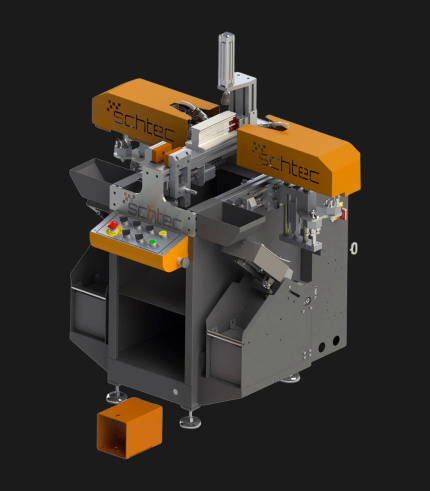RS 171 Vertical Reinforcement/Steel Screwing Machine
Schtec RS 171: Fast, secure screwing for PVC & aluminum profiles. Pneumatic screw feeding, 1.5-sec cycle, torque adjustment, and foot pedal control ensure precision and safety.
RS 171 Technical Specifications
| Air Pressure | 6-8 bar |
| Air Consumption | 16 lt./min. |
| Max. Profile Width | 130 mm |
| Min. Profile Width | 15 mm |
| Machine Height | 2.000 mm |
| Machine Length | 500 mm (with conveyor 2.230 mm) |
| Machine Width | 610 mm |
| Machine Weight | 150 kg |
SKU:
RS-171
Category: Screwing & Reinforcement Machines
Description
Standard Features
- Pneumatic unit of automatic screw feeding
- Automatic screwing with pressing hold
- Automatic stop after screwing process
- Foot pedal control for flawless screwing
- Protective switch to prevent faulty use
- Height adjustment switch for special screws
- Automatic compression of profile during screwing
- Adjustable range stops supporting profile
- Durable use of bit and easy change possibility
- Setting the torque regarding to the type of screw
- Average screwing speed 1.5 sec./pc.
Product Description
The Schtec RS 171 is a vertical screwing machine specially designed for installing reinforcement plates into PVC and aluminum profiles. With a pneumatic automatic screw feeding unit and a press-clutch system, it provides fast and secure screwing. The process is completed in about 1.5 seconds, and the automatic stop feature ensures safety. It offers maximum performance and ease of use with foot pedal control, torque adjustment, and precise screw height adjustment.
FAQ
Screwing & Reinforcement Machines
Frequently Asked Questions
Find quick answers to common questions about our Screwing & Reinforcement Machines.
1. What is the role of screwing & reinforcement machines in PVC profile manufacturing?
Screwing & reinforcement machines are used to securely fasten internal steel reinforcements or mullion connectors into PVC profiles, ensuring structural rigidity and longevity. They reduce manual labor by automating the process of positioning screws precisely at predefined points. In modern lines, these machines often incorporate drilling, feeding, and placement modules to streamline workflow. They help maintain consistent torque values, preventing over‑tightening or under‑tightening, which could compromise frame integrity.
2. What features are important for a high‑quality reinforcement screwing machine?
Key features include automatic screw feeding, profile centering/clamping, servo or pneumatic controlled axes, torque control, adjustable height/stop systems, and safety interlocks. The ability to handle multiple types or sizes of connectors without major retooling is also valuable. Fast changeover between configurations and a memory of parameter sets for different profiles improve efficiency. Reliable construction and tool accessibility reduce downtime and maintenance.
3. How does the RT 176 Automatic Mullion Connector Screwing Machine operate and what are its advantages?
The RT 176 machine screws mullion connectors into PVC profiles automatically from both sides in a single operation. It supports up to 4 connector types simultaneously without needing to change settings. It includes dual‑sided screw feeding, automatic clamping, and profile centering systems. Reported cycle speed is about 5.5 seconds per connector.
4. What distinguishes machines like RS 171 Vertical Reinforcement/Steel Screwing Machine in this category?
The RS 171 machine features an automatic screw feeding unit, pneumatic pressing hold during screwing, automatic halt after completion, and foot pedal control for operator convenience. It also has height adjustment switches to suit different screw lengths, and adjustable stops supporting various profile widths. Average screwing speed is around 1.5 seconds per piece, indicating high throughput.
5. What maintenance practices ensure reliable operation and longevity of screwing & reinforcement machines?
Keep the screw feeding and dispensing channels clean from dust, chips, or debris to avoid jamming or misfeeds. Regularly inspect and calibrate torque settings, height adjustments, and pneumatic components to maintain accuracy. Lubricate moving axes and exchange worn bits before they degrade screw quality. Check clamps, stops, and sensor systems for wear and alignment. In addition, monitor logs or error messages proactively to catch drift or mechanical issues early.


